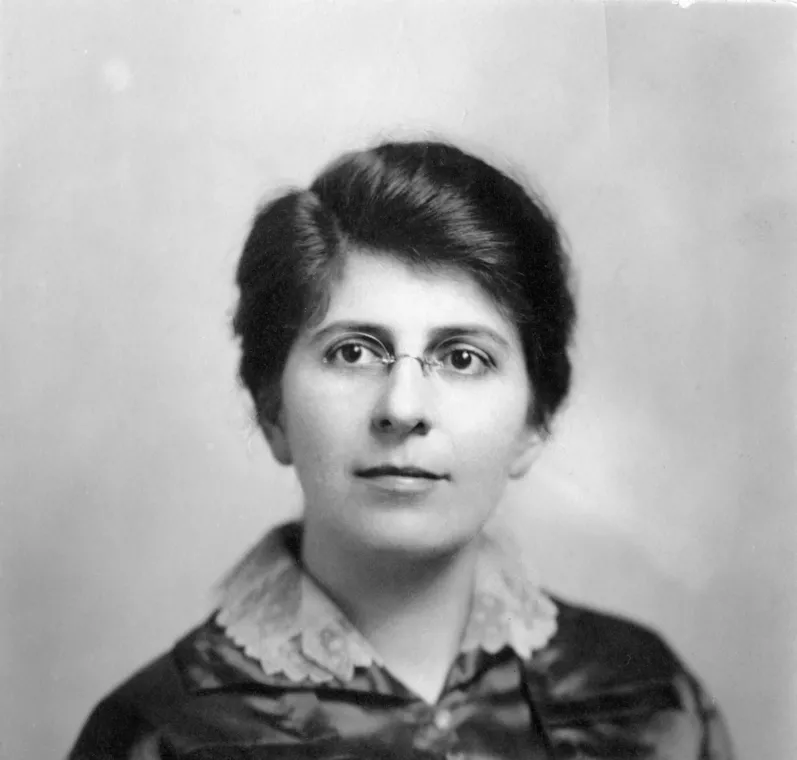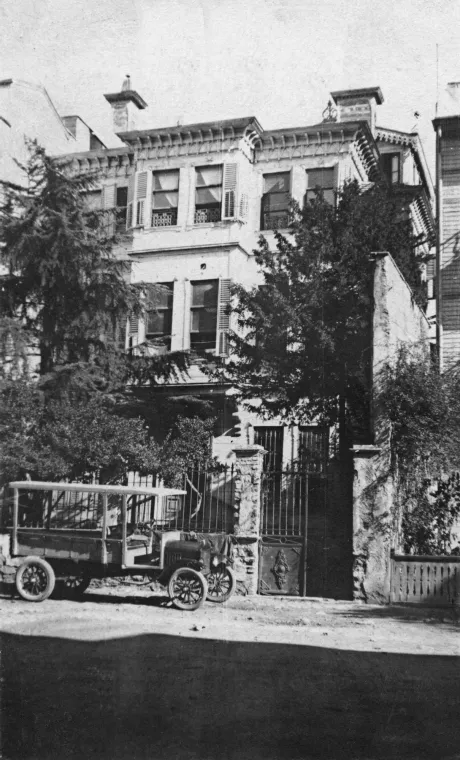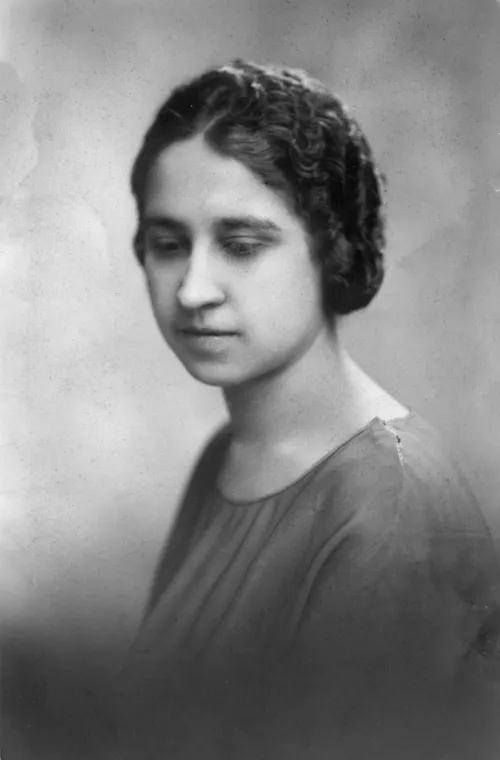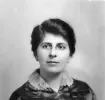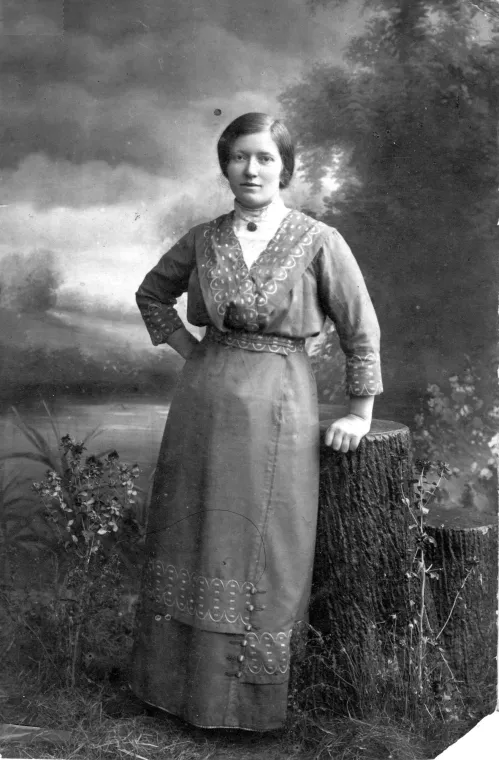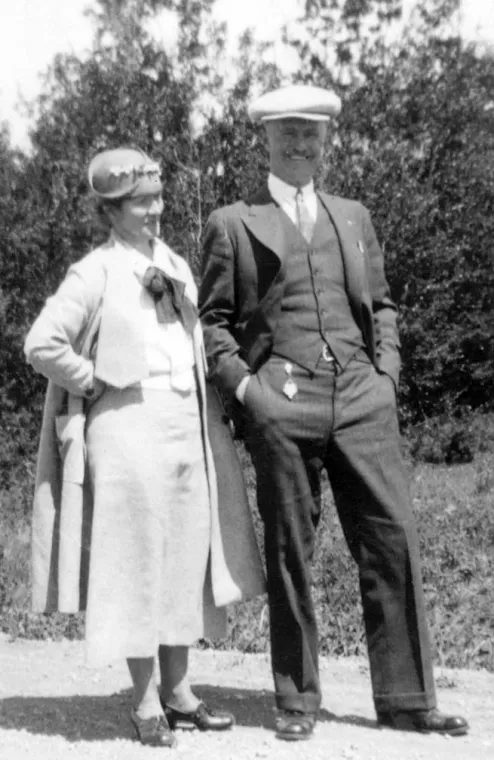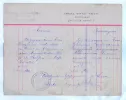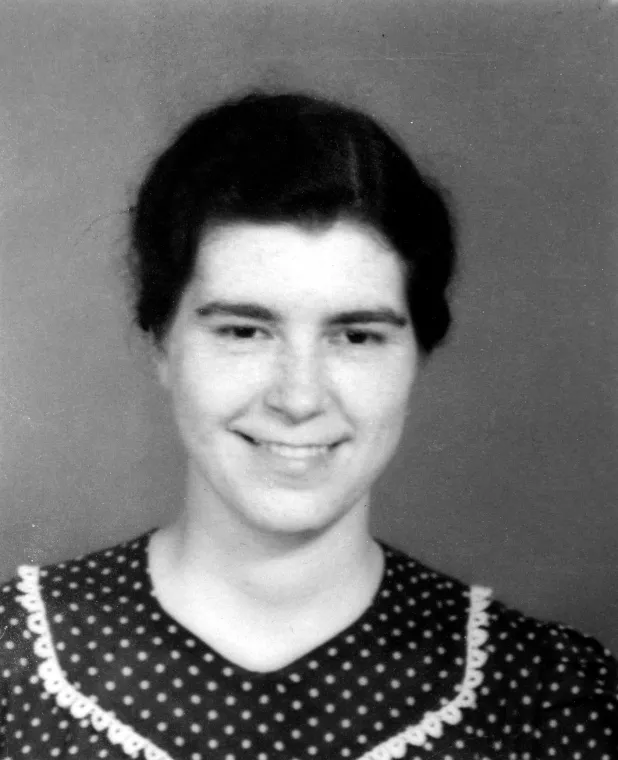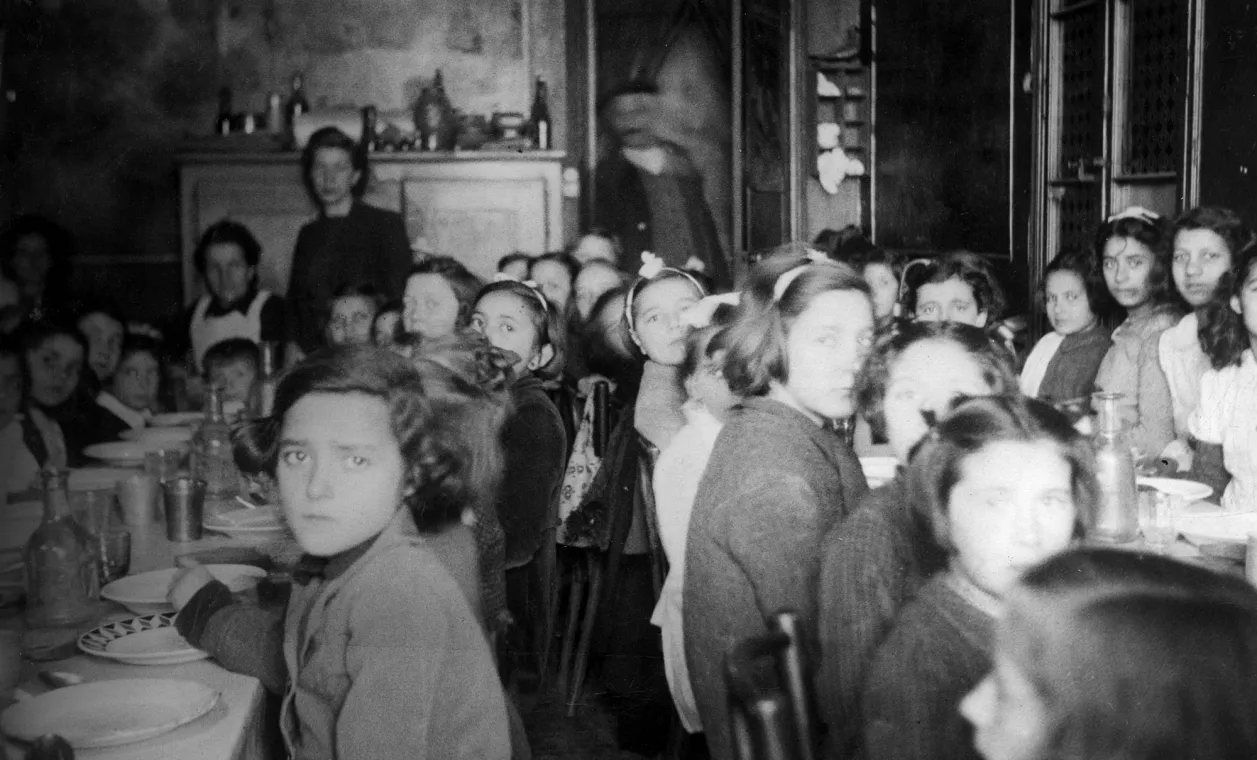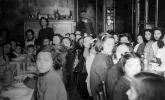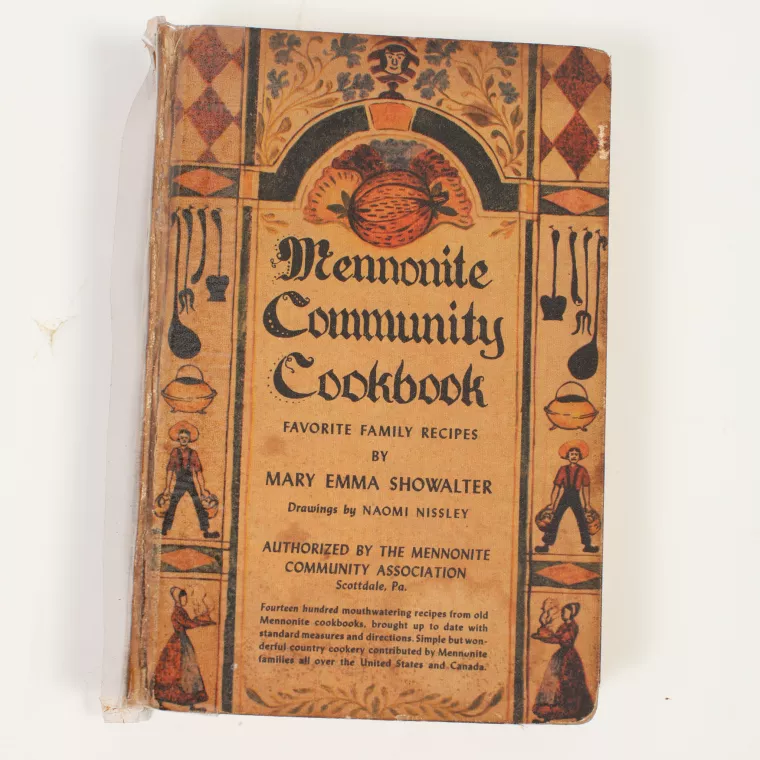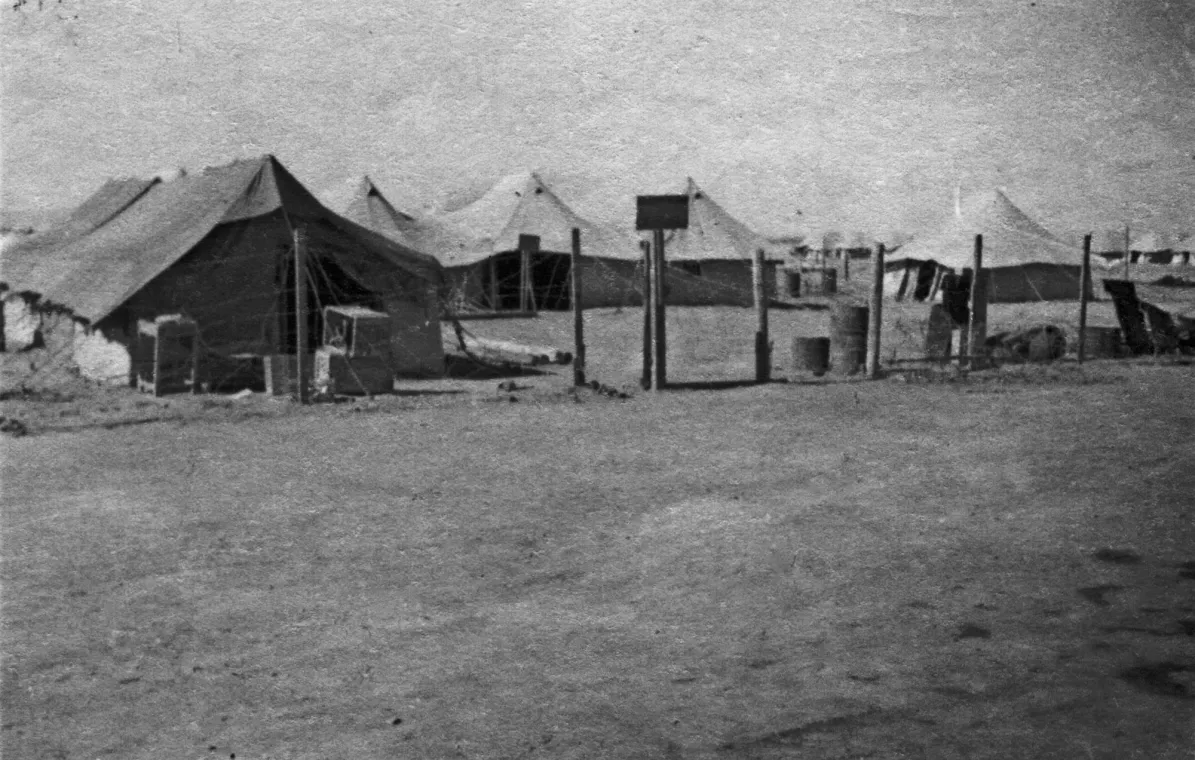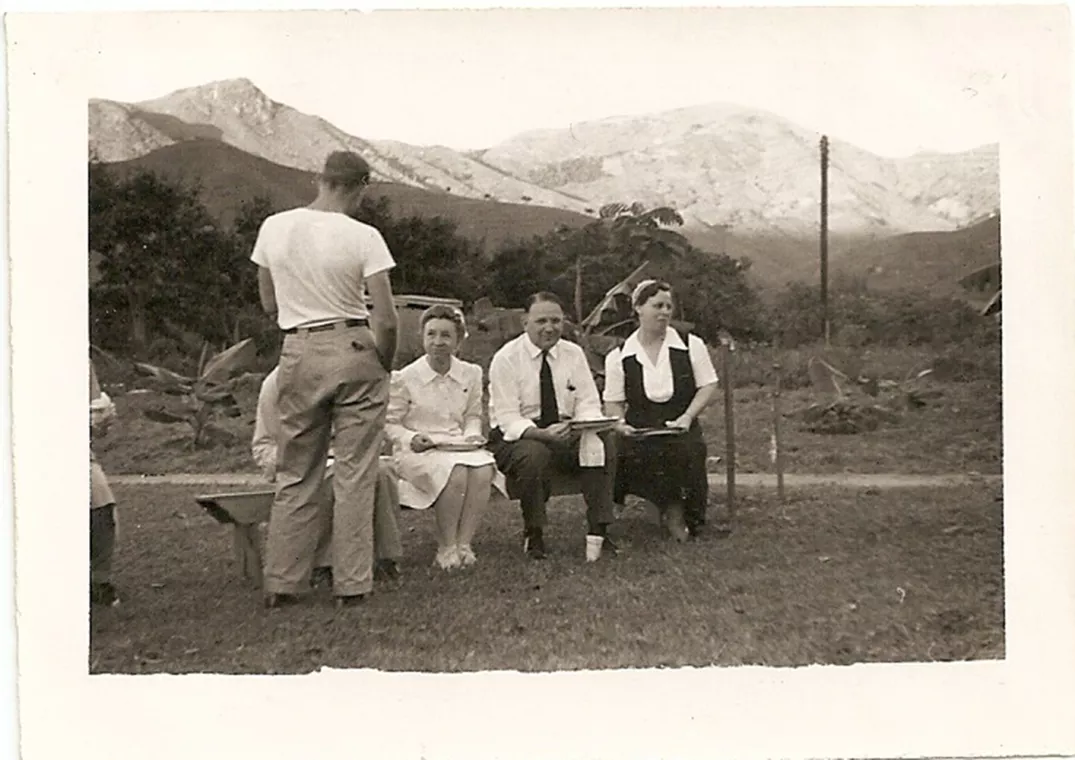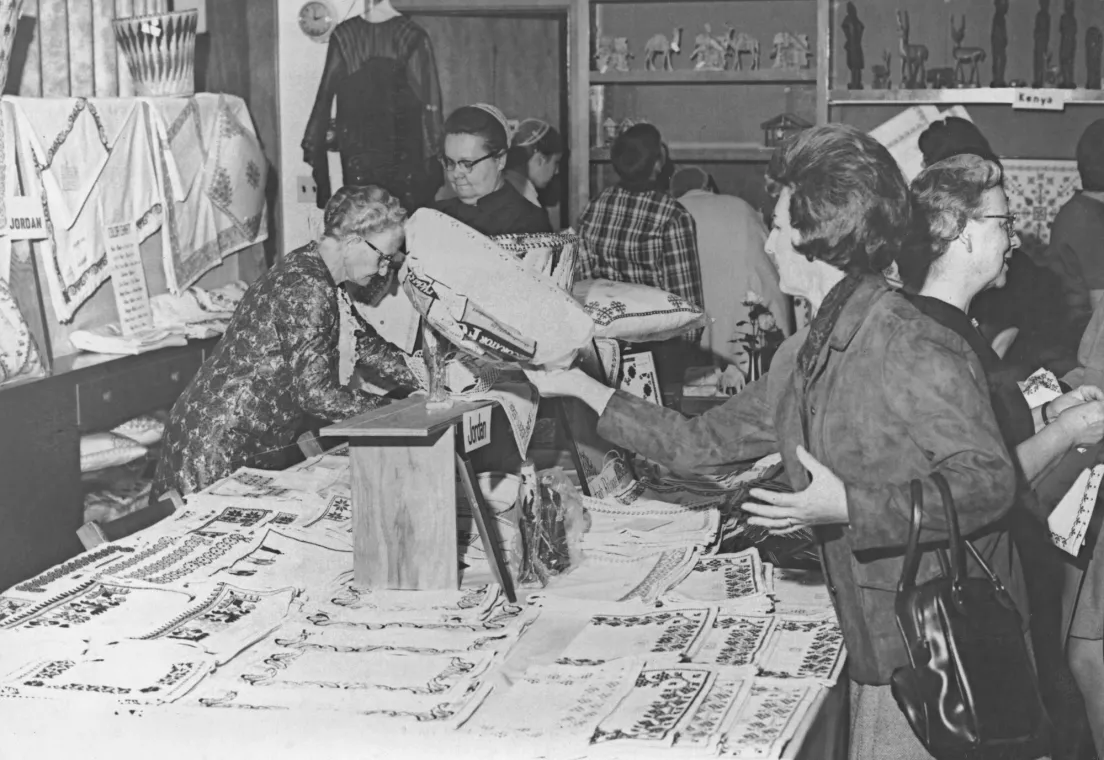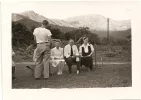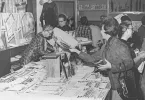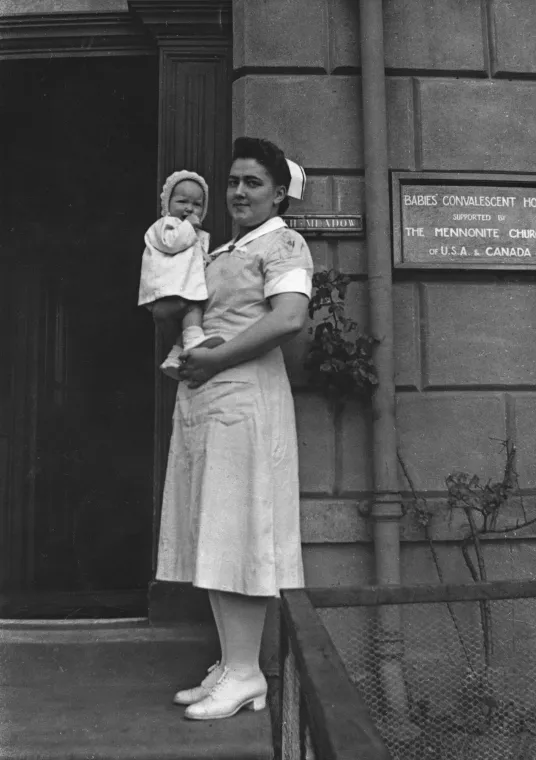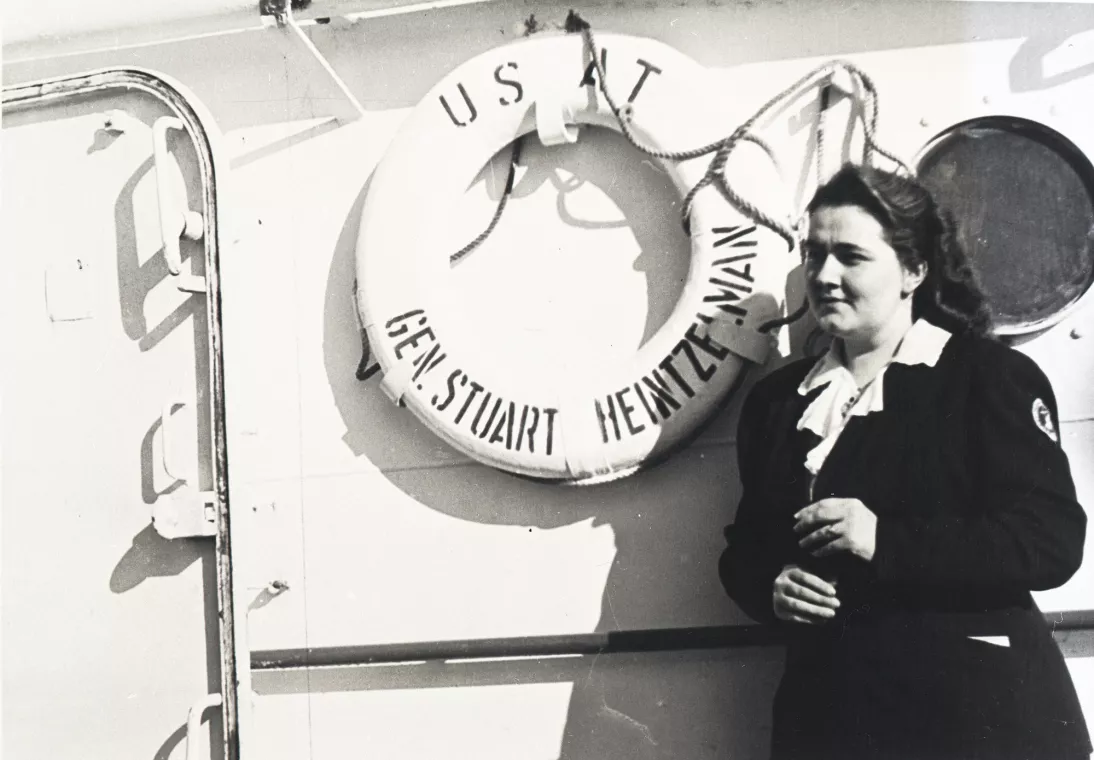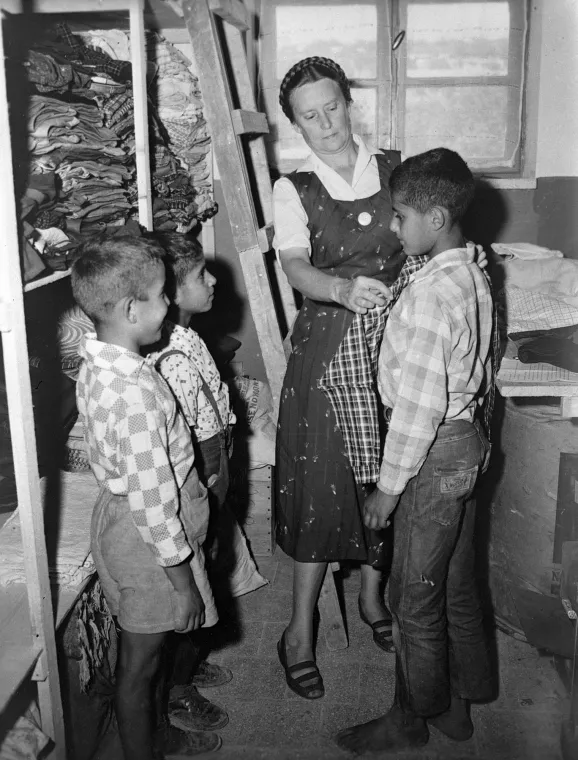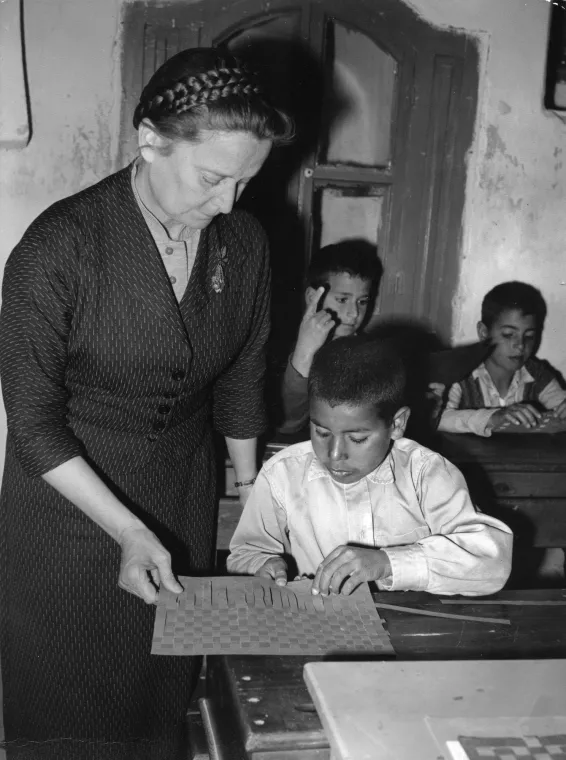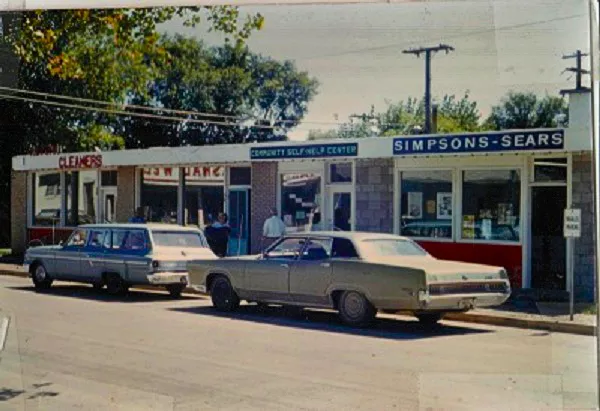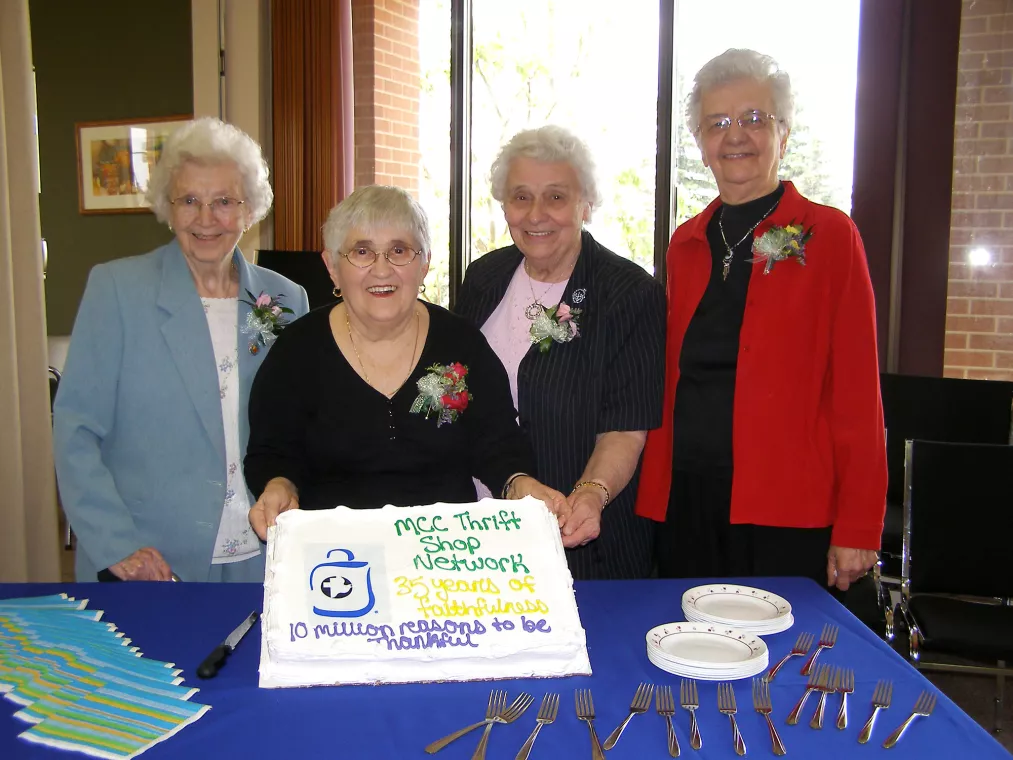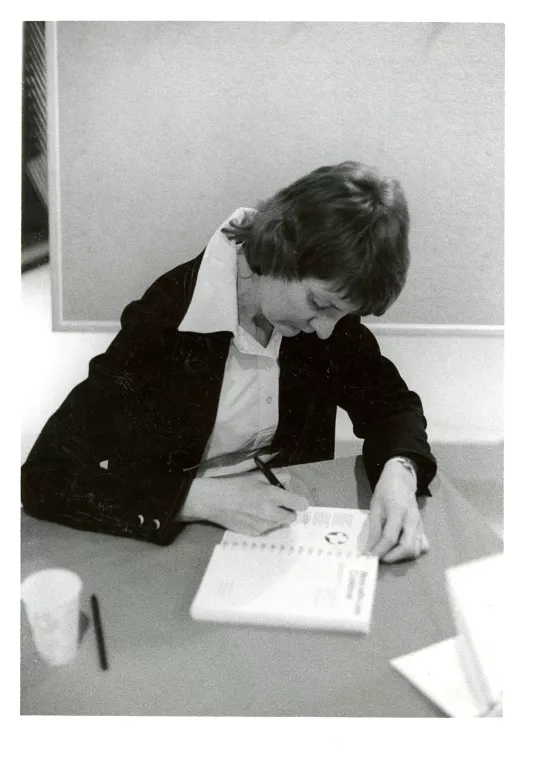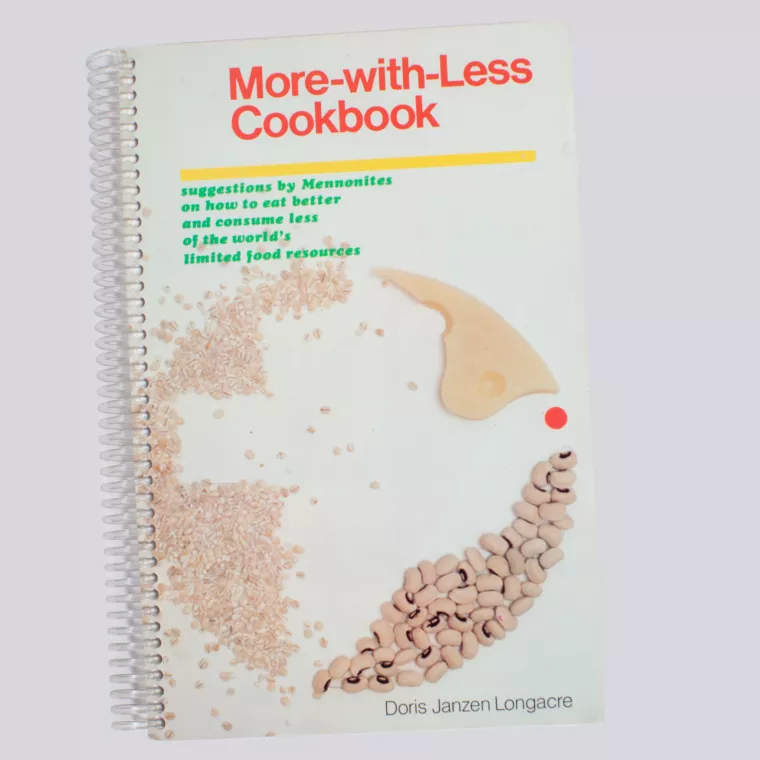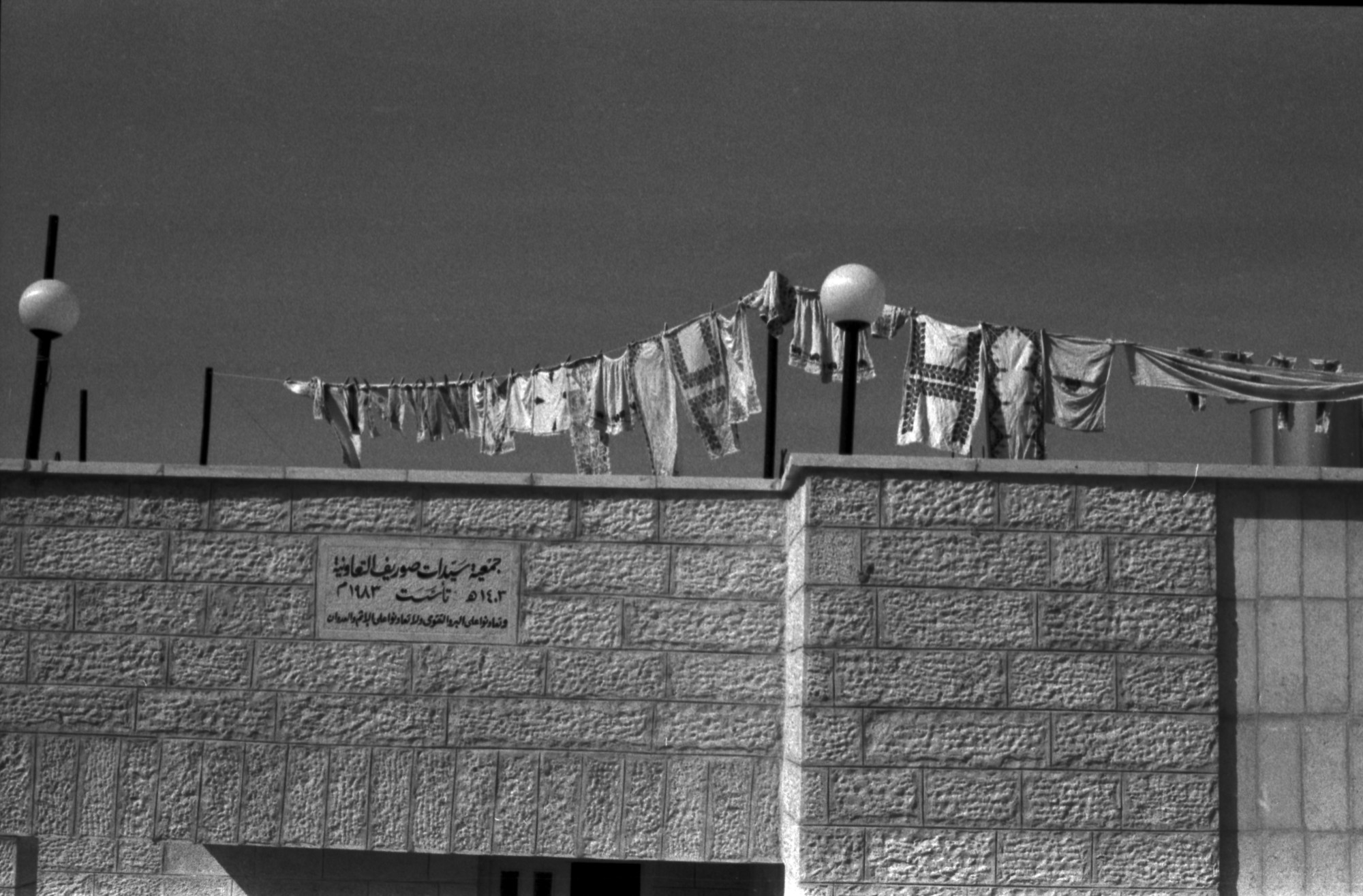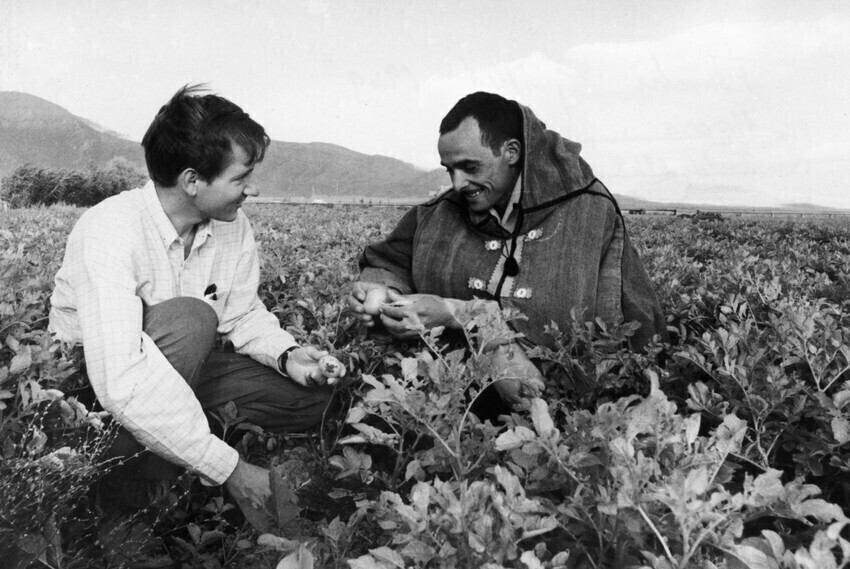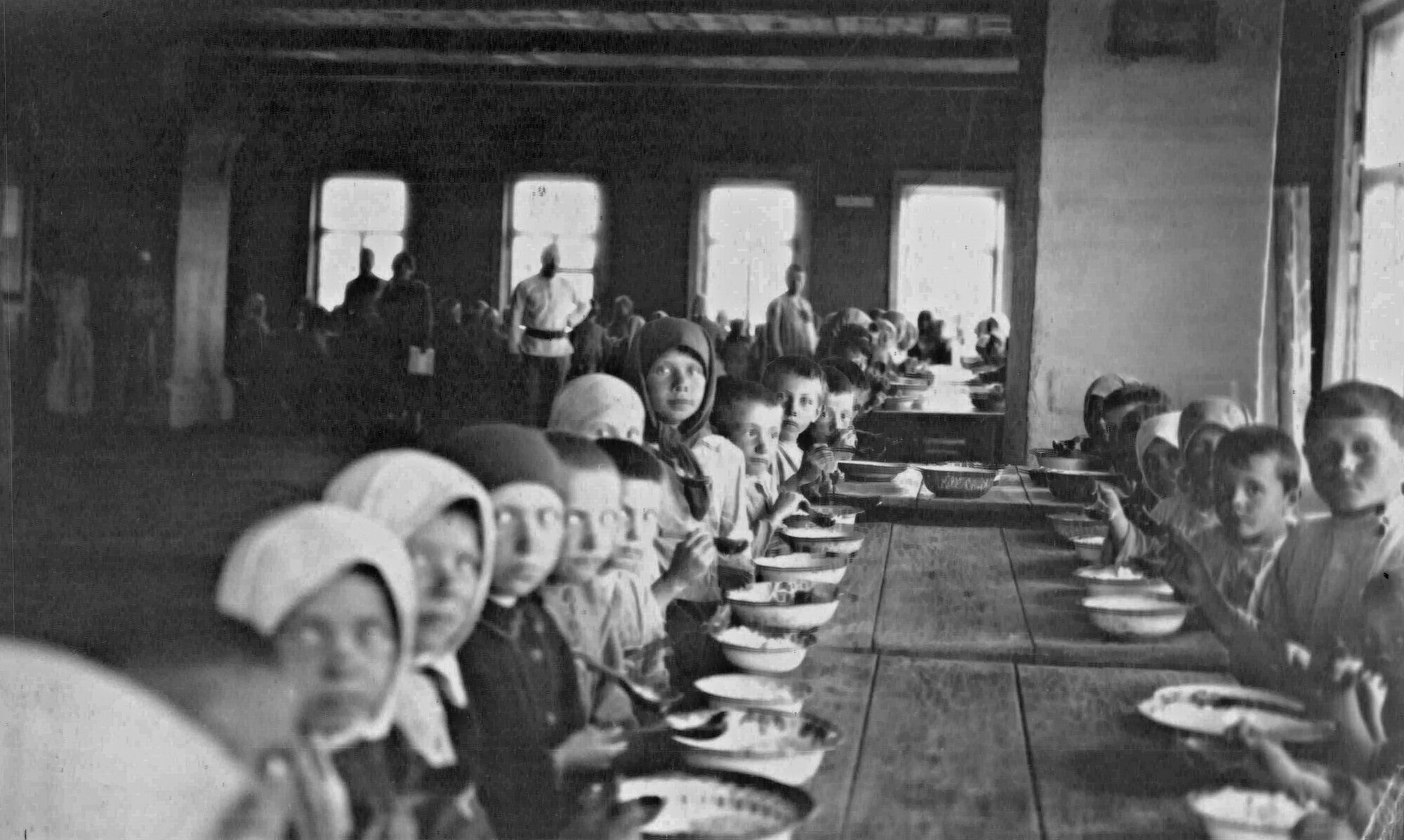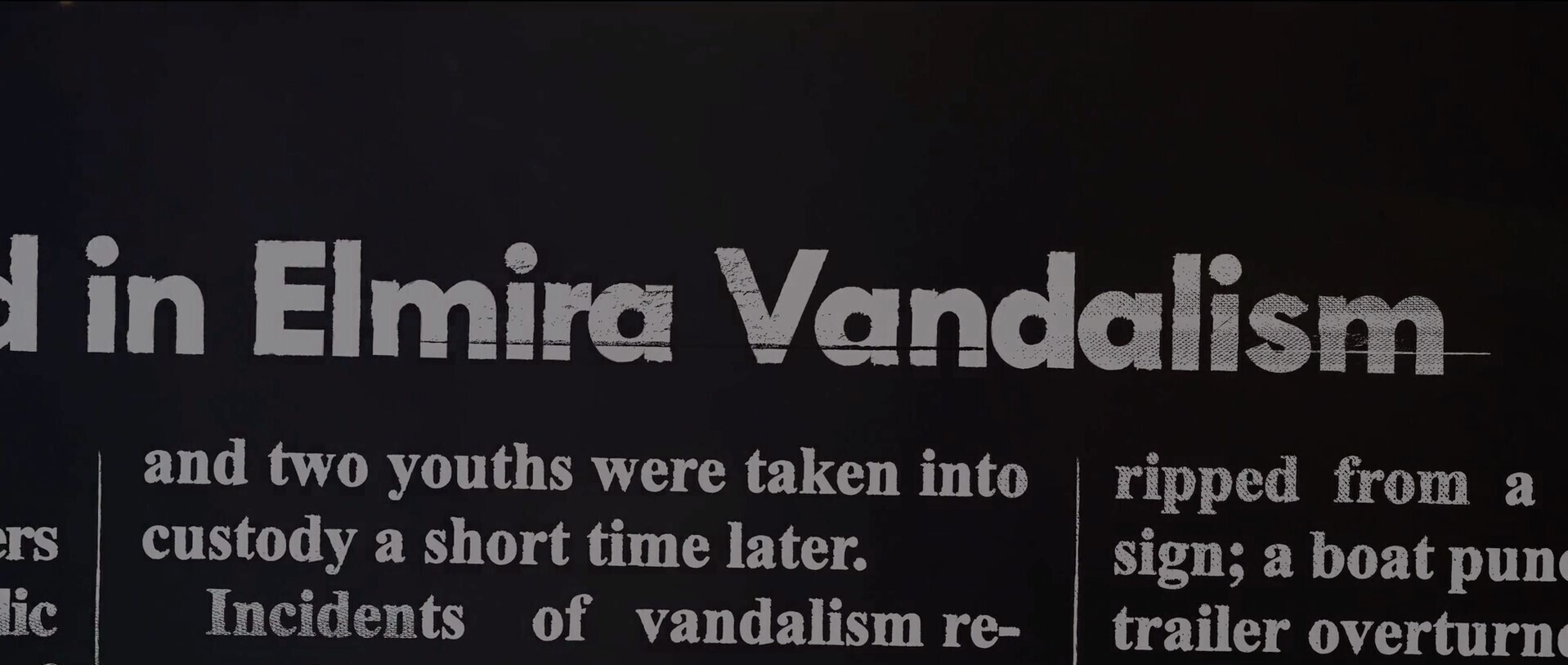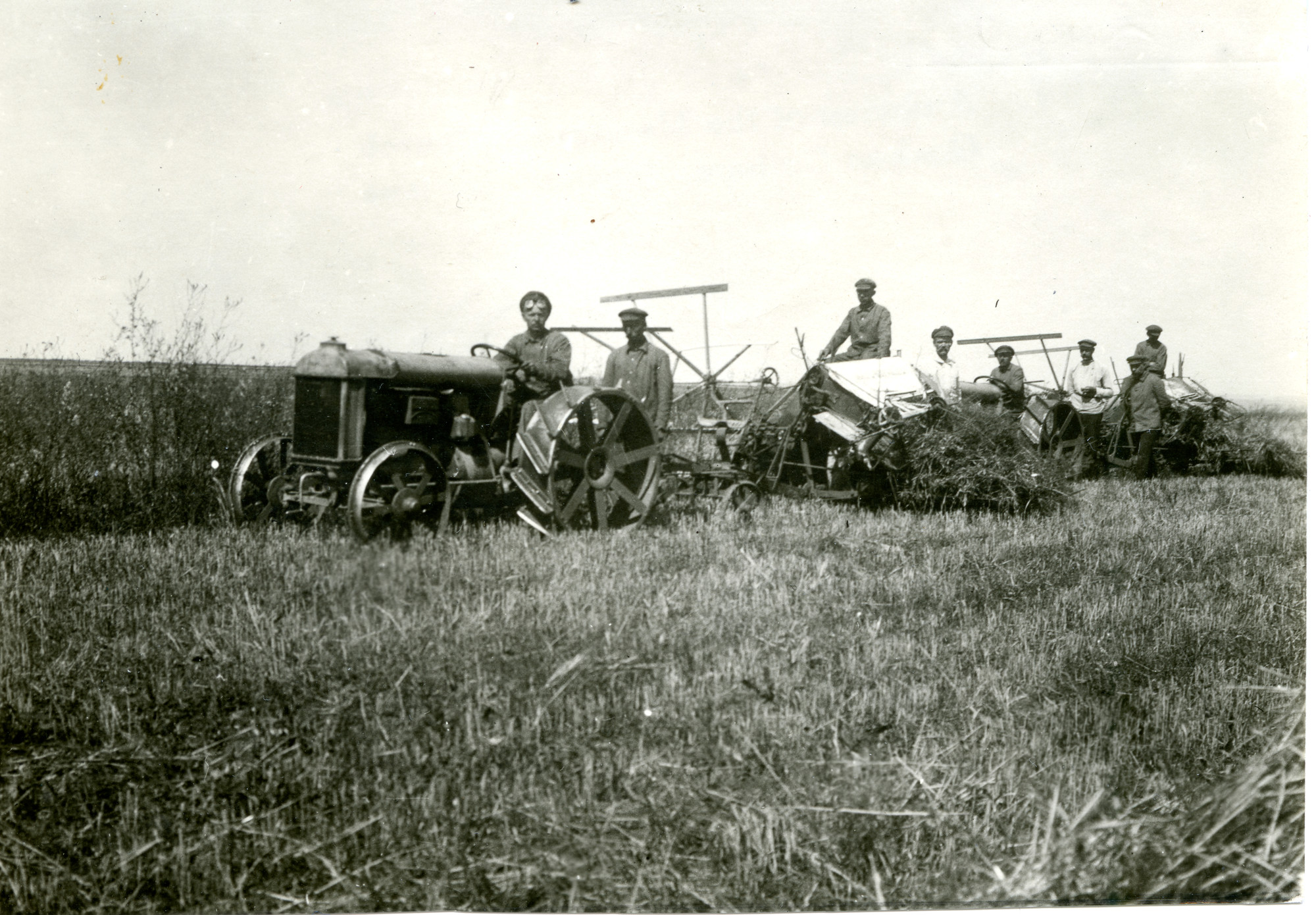Women on the move for MCC
From the beginning, it was not just men who crossed oceans and spent months and years working in the name of Christ around the world.
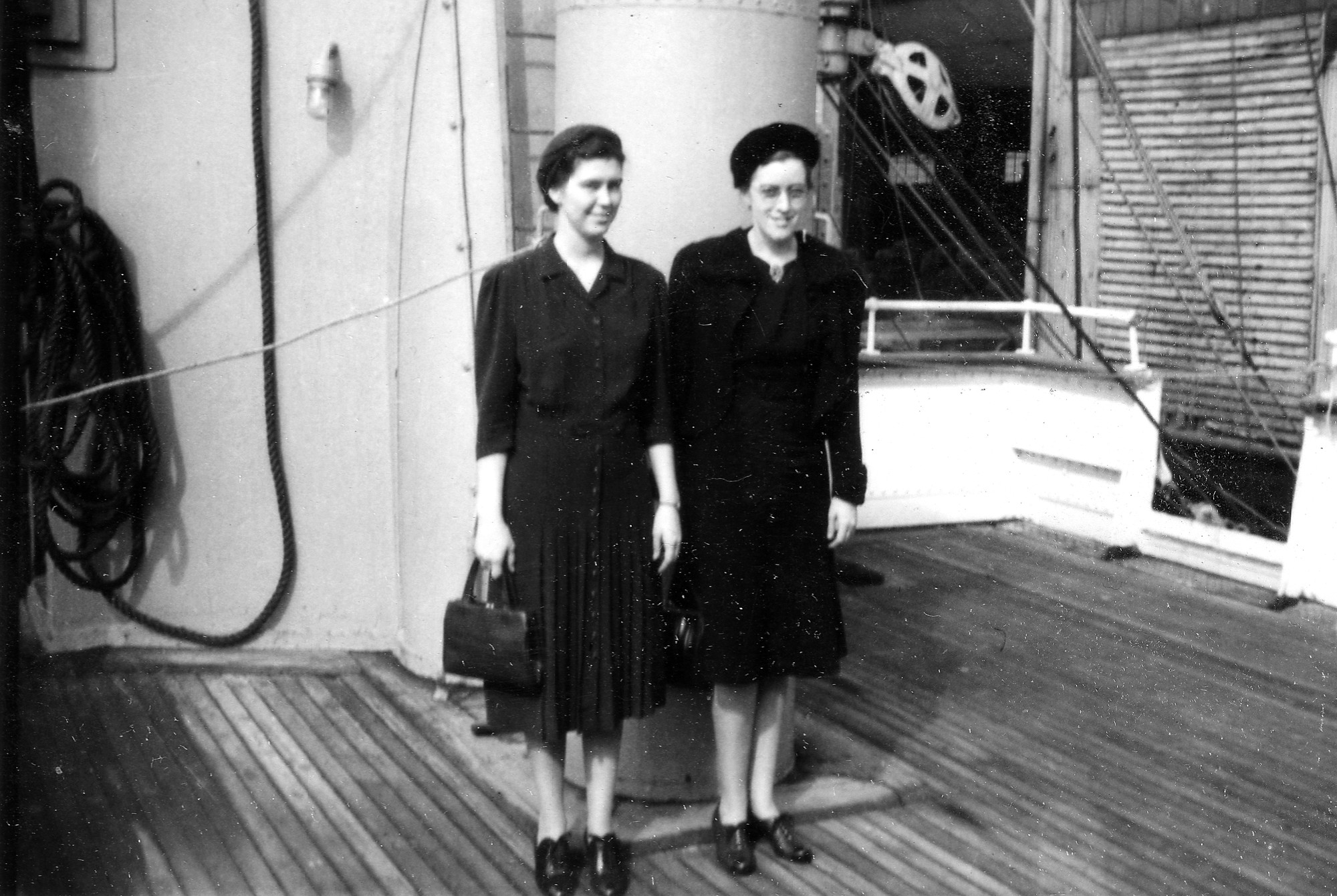
Look through the accounts of MCC's early history, and you see the names of men – from older church leaders to young workers like Orie Miller, Clayton Kratz and Arthur Slagel.
But from the 1920s, women were part of the efforts, not only collecting clothing and donated items at home, but sharing God's love and compassion for all in areas torn by war and need.
"I'm just a woman trying to help other women."
Edna Ruth Byler
Here are a few stories of early MCC women and their service in the name of Christ.
We hope these inspire you to celebrate the many MCC women of the past and present – both MCC workers and the partners and project participants who are working courageously to meet basic needs, find new opportunities and work for peace and justice.
(Top photo: Lois Gunden and Helen Penner set out for MCC terms in France in October, 1941– more than a year after France had surrendered to the Nazis and was under German occupation. Photo courtesy of Gunden/Clemens families)
A home for Russian refugee women
In 1921, refugees from southern Russia (present-day Ukraine) flowed into Constantinople (present-day Istanbul). MCC, while still seeking to get relief directly into southern Russia, responded to the flood of needs in Constantinople.
Key to that early effort were Vesta Zook (later Slagel) and Vinora Weaver (later Saltzman), both from Indiana and faculty members at Goshen College. They sailed from New York to Constantinople on March 26, 1921.
Zook was assigned to serve as superintendent of a children's home, which cared for often-malnourished children under the age of 11. "Many of the children are now wearing the clothing sent from sewing circles in America," Zook reported in 1921. "I wish it were possible for the people who contributed these garments to see the children wear them."
Weaver served as director of a Mennonite home for Russian refugee women. "It is a pitiable sight to see hundreds of men walking the streets day after day without food or shelter, but we all felt that it is a more pitiable sight to see young girls doing so," she wrote in her first report.
From famine to relief kitchen leader
Anna Janzen married Jacob Funk in southern Russia (present-day Ukraine) in 1920 – the year that MCC was formed. (The portrait of her above shows her shortly before her marriage.)
Like almost all people, she was very much affected by the famine of 1920-21. She and Jacob sold many of their possessions, including their wedding rings – and ate nettles, mushrooms, weeds and gophers.
When MCC opened a feeding kitchen in the spring of 1922, they hired Anna to be in charge – she received a double ration so that she would regain strength to do the work.
Anna and Jacob and their daughter Frieda were among the first Mennonites to emigrate from Russia in 1923. A second daughter born to them in Canada was Katie – Katie Funk Wiebe, the famous Mennonite writer. In 1985, Anna and Jacob were living in Edmonton, Alberta – observing their 65th anniversary, which was also MCC’s 65th anniversary – and asked all their friends to donate to MCC.
Rescuing Jewish children
MCC worker Lois Gunden (later Clemens) set out for Europe on Saturday, Oct. 4, 1941– more than a year after France had surrendered to the Nazis and was under German occupation.
Fluent in French, Lois was sent to a children’s home close to France’s border with Spain, caring for young refugees from the Spanish Civil War.
Soon, though, she began to respond to another need: Helping to ensure that Jewish children were hidden among the other children so they wouldn't be deported on trains. It would only be later that the world would realize that the Germans were operating death camps in Eastern Europe. Lois recorded that her great fear for the Jewish children who were deported was that they would starve.
"It doesn’t matter whether you are male or female, but what matters is the person you are and what you can give to the life of the church and the community."
Lois Gunden Clemens, in 1989 interview with Philadelphia Inquirer
Comfort food and CPS
Did you know that Mary Emma Showalter, author of Mennonite Community Cookbook, calls her time in Civilian Public Service (CPS) the "door" that eventually led to her later work?
Finishing her college degree in 1942, Showalter chose to serve with CPS instead of teaching home economics in public school, where she anticipated she'd be expected to support the war effort, writes Melodie Davis in a 2015 article in The Mennonite.
"If the CPS boys are cowards, then I am one, too; furthermore, they are my brothers and friends."
Mary Emma Showalter
Showalter, one of three women among 120 men at the CPS camp in Grottoes, Virginia, was soon asked to visit 15 CPS camps throughout the country and evaluate camp food expenditures (42 cents a day per person was budgeted), Davis notes. Showalter told MCC's Orie Miller that she would rather go abroad to serve.
"He replied, 'Well, do this first, and then we'll talk about relief work.' She agreed, and her visits to the camps became the seed for creating Mennonite Community Cookbook," Davis recounts. "Wherever she went, Mary Emma observed that Mennonite cooking was much the same. The dishes the men hankered for came from their home communities. She later said her CPS experience was the 'door that opened up all my professional life.'"
She did get her chance to serve abroad, working with feeding programs in two refugee camps, El Shatt and Toolumbat, in Egypt. "I now have full charge of all the children under 10 years of age, that is, as far as their feeding goes. I have a nice sized family of one thousand and seventy-five children... Just today Dr. Yoder and I stood in the Mess hall and watched them come to the call of the dinner bell," Showalter wrote in February 1945.
She later served at MCC's center in London, where Davis notes she was known for Virginia-style dinners. And whatever she served was the result of successfully sorting ration books and food coupons. "I did not know an egg could taste so good until now when we get only three or four apiece each month," Showalter wrote in one of her reports. Mennonite Community Cookbook was published in 1950 after Showalter (later Eby) returned to the U.S.
Ten Thousand Villages
In 1946, when Edna Ruth Byler traveled with her husband J.N. Byler to Puerto Rico, she met women in La Plata Valley who were struggling to feed their children. Having lived through hard times herself during the Depression, she knew the face of poverty. She also knew the importance of dignity and people wanting a way to help themselves.
Byler was moved to do something. She saw the pieces of fine embroidery the women of La Plata created, but had no place to sell. If she was so struck by these unique textiles, perhaps others in the U.S. would also appreciate their beauty. With no clear plan but a sense of purpose, Byler brought the pieces home and began to sell to friends and neighbors.
By the 1950s, she was driving her Chevy packed with global needlework to women’s sewing circles and parties of interested friends across the country. She shared the stories of the makers, describing how each purchase meant that a woman gained economic independence and a chance to give her family a brighter future.
That effort eventually grew into Ten Thousand Villages, providing access to sustainable income and life-changing opportunities to artisans in dozens of countries.
"The men knew MCC through Orie Miller. We women knew about MCC through Edna Ruth Byler."
Carolyn Leaman Weaver in 2019
Up from the rubble
In 1942, Elfrieda Klassen volunteered to serve with MCC as a nurse and was sent to England. She and another Canadian nurse and MCC worker, Edna Hunsberger, drew lots to determine who would work with children and who would go to a home for seniors. Elfrieda wound up caring for children in a convalescent home in North Wales.
"When I saw the first group of children arrive from the slums of Manchester and Liverpool, I knew I was needed and that I would love caring for those children."
Elfrieda (Klassen) Dyck, in Up from the Rubble
She recalls the home served children from 6 months to 5 years old. Some came directly from being hospitalized. Others were suffering from malnutrition, skin infections and respiratory ailments. Almost all had lice. Elfrieda cared for the babies and most severely ill children. In 1944, she married MCC worker Peter Dyck (he slipped a ring on her finger during an air raid, but that's a story for another time). Together, they oversaw a boys' home in England, served in the Netherlands and worked with refugees in Germany.
She and Peter accompanied refugees out of Berlin to Paraguay in 1947 and later Elfrieda accompanied other transports. The 1948 journey from Bremerhaven (second photo in gallery) was the first transport she led.
Twins "sat where they sat"
In 1952, twin sisters Ada and Ida Stoltzfus came to the West Bank to assist in MCC's relief work, including milk distribution, feeding centers, a needlework project and humanitarian aid to tuberculosis patients.
The sisters opened a boys' home in Hebron, serving orphans and children in need. It soon became an accredited school as well. The primary work of the Stoltzfus sisters was the operation of the orphanage, but they also continued to assist with the distribution of clothing, food and medicines to destitute families.
"The irrepressible twins ran the school with great gusto, bandaging cuts, making beds, coordinating the teaching staff, telling Bible stories at daily chapels, organizing Christmas pageants and taking students to the Baraka Bible Presbyterian Church in Bethlehem for Sunday school and church."
Salt and Sign: Mennonite Central Committee in Palestine, 1949-1999
In the sisters' memoir, We Sat Where They Sat, Ida recalls that a few years into their time in the West Bank, fellow workers were ending three-year terms and heading back to Canada or the U.S. "We had signed up for five years, but we joked that we worked so slowly we had to stay and finish our job," she recalled.
Indeed, the sisters remained in the West Bank until the 1980s, working with MCC through the mid-1960s and then administering the school in Hebron, which continued to receive canned meat and blankets from MCC, for decades afterward.
Turning clothing into cash
The idea started with a problem – and four Manitoba women who saw a way around it. At an MCC Manitoba annual meeting in 1972, John Hostetler, who oversaw the shipment of MCC's supplies around the world, report that MCC was reducing shipments of used clothing. "What we need," he said, "is a machine that will turn clothing into cash."
Within a few days of the February meeting, Selma Loewen invited friends Linie Friesen, Sara Stoesz and Susan Giesbrecht to her home where they discussed the idea of selling used goods locally and donating the proceeds to MCC. In March, they opened the first MCC Thrift shop in Altona, Manitoba, with women’s groups contributing $125 to cover the first month's rent.
"This is unbelievable – our mustard seed has turned into a big tree and it is still growing."
Linie Friesen
One month later, a thrift shop opened in nearby Steinbach and later in the year, two shops opened in Winnipeg. These four shops contributed $6,300 to MCC in 1972. It was the beginning of a network that has grown to 56 shops in Canada and 57 in the U.S. and has generated contributions totaling more than $167 million for the work of MCC.
Doing more with less
In the 1970s, MCC called Mennonites to a major focus on the world food crisis with a simple, but dramatic request – that each household examine its lifestyle, especially food habits, with a goal of eating and spending 10% less.
"In Mennonite communities," Doris Janzen Longacre wrote in the introduction to the More-with-Less cookbook, "people are responding with a kind of holy frustration. 'We want to use less,' they say. 'How do we begin?' ... From questions like these, the idea of compiling a cookbook was born."
"We are looking for ways to live more simply and joyfully, ways that grow out of our tradition but take their shape from living faith and the demands of a hungry world."
Doris Janzen Longacre
In the first 25 years after it was published, the book had sold 830,000 copies and was in its 47th printing. It remains a staple of many Mennonite households today.
And the words of her introduction are as timely an invitation today as they were decades ago.
"We are looking for ways to live more simply and joyfully, ways that grow out of our tradition but take their shape from living faith and the demands of a hungry world," she wrote. "There is not just one way to respond, nor is there a single answer to the world's food problem. It may not be within our capacity to effect an answer. But it is within our capacity to search for a faithful response."
And so many more:
These images and stories represent only a tiny sampling of the women who have given of themselves, lived out their faith through MCC's work and changed lives around the world in MCC's first 100 years of ministry.
May these inspire you to dig deeper into stories of women across MCC's history and active in our work today.
Give a gift where needed most
Every donation makes a difference.


